Carl Jung's 'Pool of Life' description inspires Liverpool mural
- Published
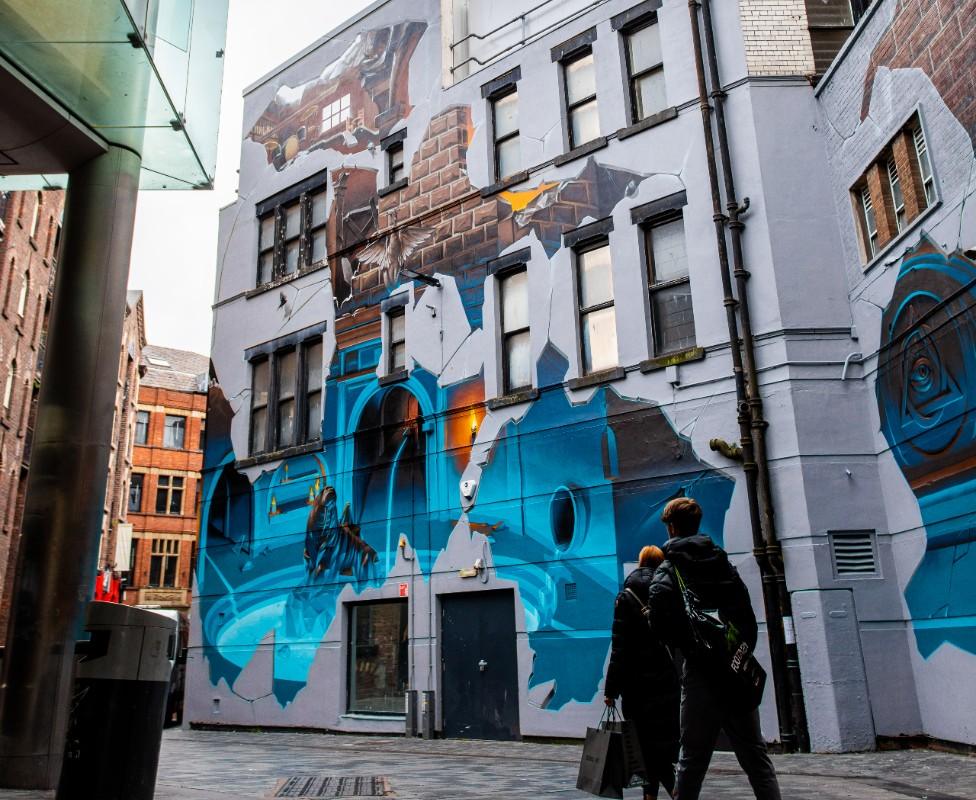
The mural includes references to both Jung's essay and the cultural history of the Cavern Quarter
A huge and striking mural inspired by a pioneering thinker's description of Liverpool has been painted across some of its city centre buildings.
Psychoanalyst Carl Jung wrote in 1927 that Liverpool, a city he had only ever dreamt of, was the "Pool of Life".
The Cavern Quarter mural has been created by Glasgow-based street artist Sam Bates, also known as Smug.
Liverpool BID's Bill Addy said it would show visitors "the history that surrounds them".
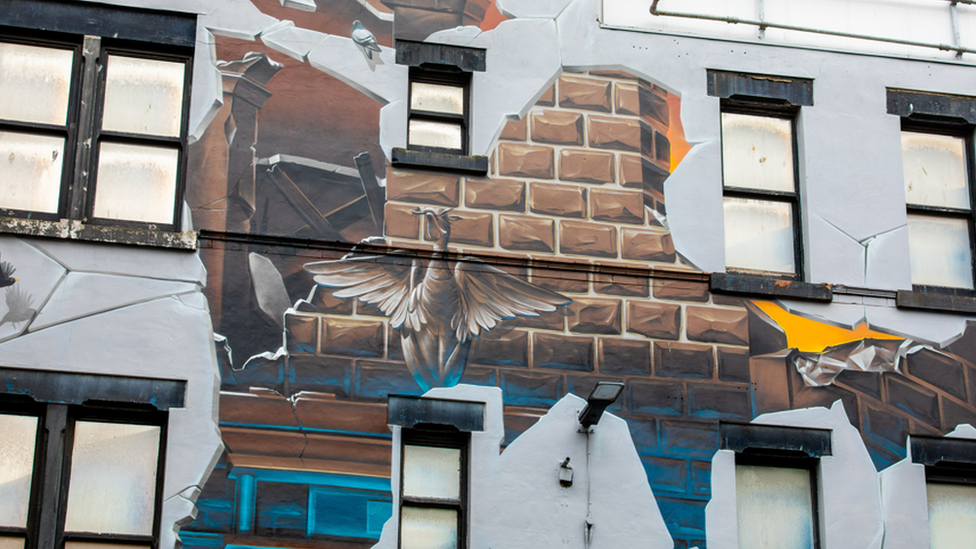
The artwork includes a Liver bird, the city's motif
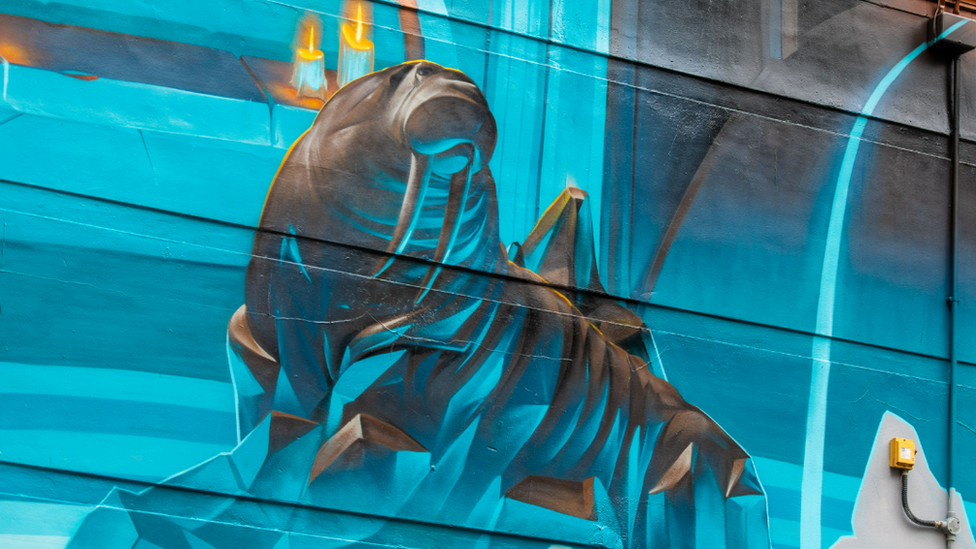
There is also a walrus, a nod to the Beatles who first found fame in the nearby Cavern Club
The Swiss psychiatrist, one of the founders of modern psychology, never visited Liverpool, but after a vivid dream about the city in 1927, he wrote an essay, in which he said it was "the pool of life, it makes to live".
A spokeswoman for Liverpool BID said those reading the essay took a reference to a place "into which many streets converged" as being Mathew Street and Rainford Square in the Cavern Quarter.
In the 1970s, poet and artist Peter O'Halligan popularised the use of the phrase to describe the area.
In 2012, a plaque to mark Jung's Pool of Life was unveiled nearby.
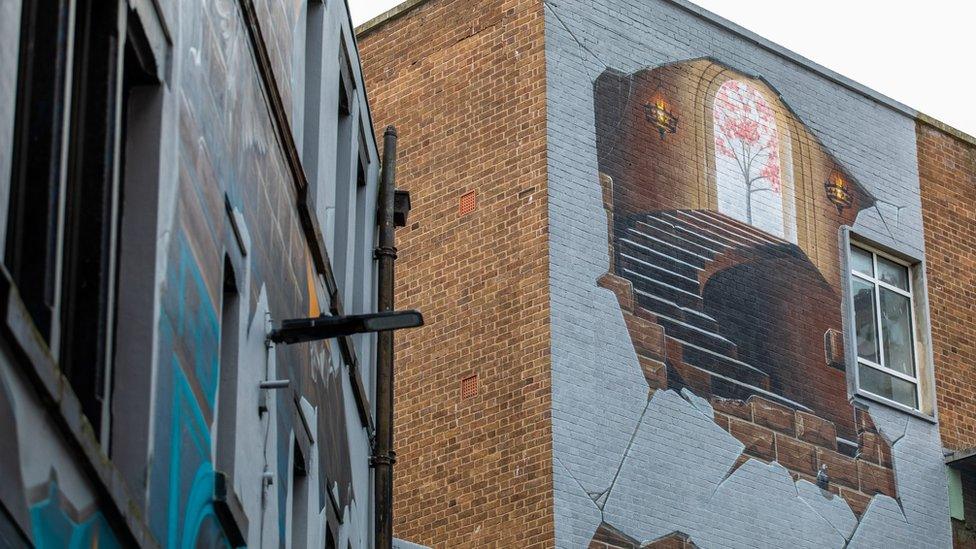
The work is topped by an image of a tree, which Jung mentioned in his essay
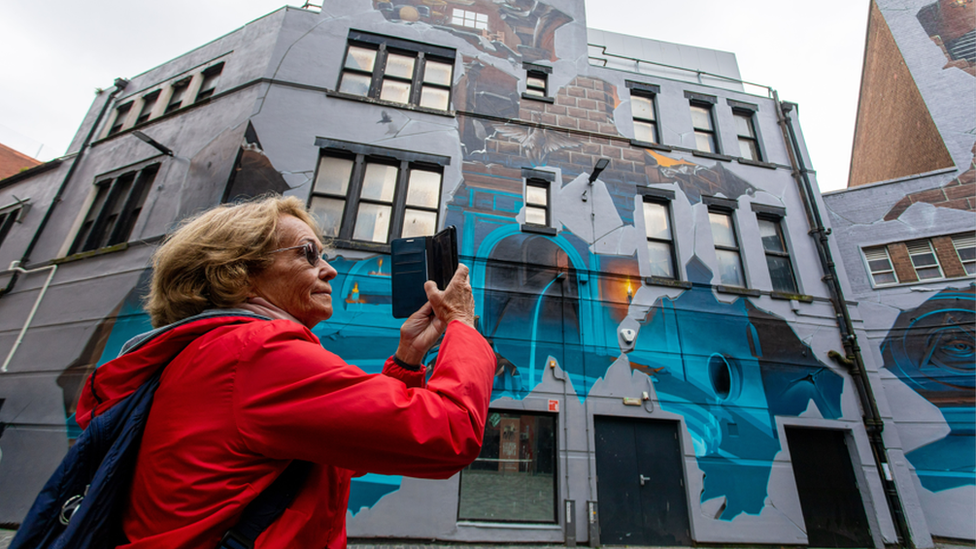
Mr Addy said he hoped the work would help to tell visitors "the history that surrounds them"
The mural, on Harrington Street, was commissioned by Liverpool BID and Culture Liverpool on behalf of the Beatles Legacy Group.
The spokeswoman said the work "hints at the area's layered history" and included references to the well-known nightclubs Eric's and The Cavern and the city's motif.
It also includes a magnolia tree, which Jung mentioned in the essay, and a walrus, a nod to the titular subject of the Beatles' I Am The Walrus.
Mr Addy said the idea had been "to both animate the public realm, but also to share with the many visitors, shoppers, music lovers and more who pass through the Cavern Quarter the history that surrounds them".
"I am delighted that this work will cast a light on one of my favourite chapters of the city's history, which has gone so far in shaping our unique culture," he added.

Why not follow BBC North West on Facebook, external, Twitter, external and Instagram, external? You can also send story ideas to northwest.newsonline@bbc.co.uk
Related topics
- Published22 April 2022

- Published7 March 2022
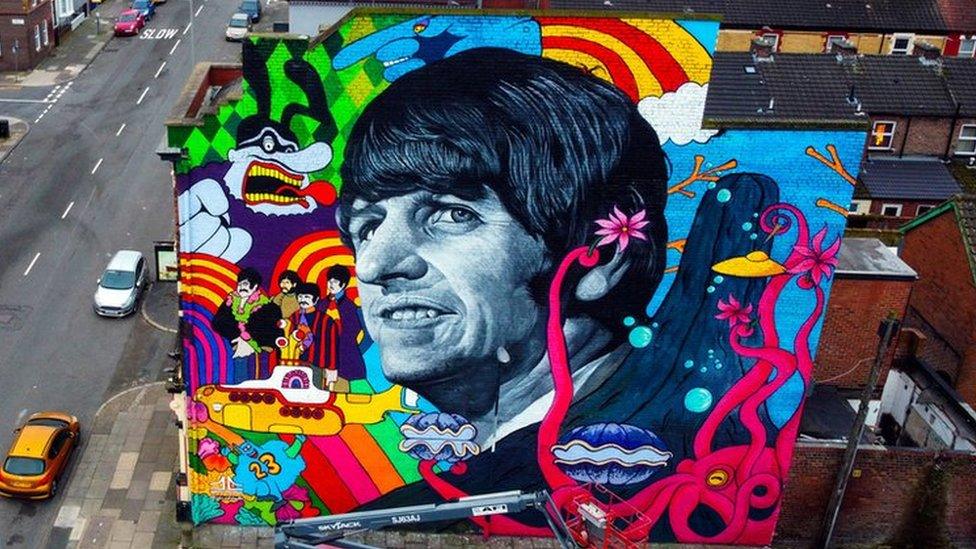
- Published18 August 2021
